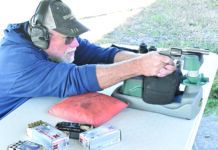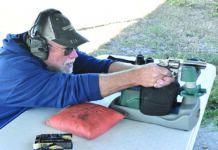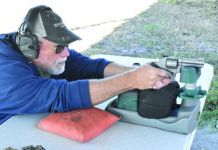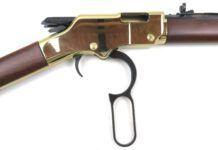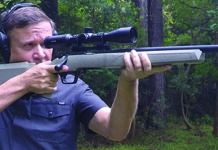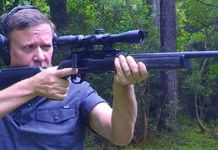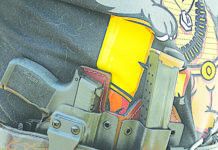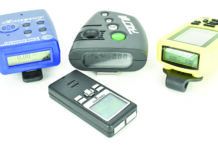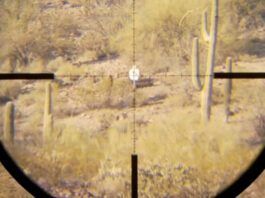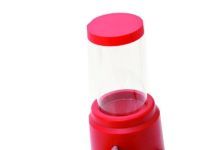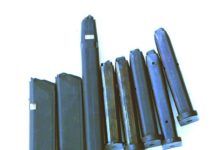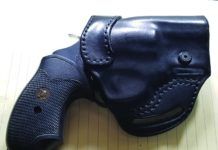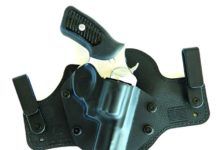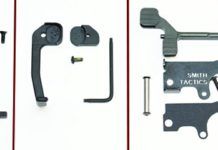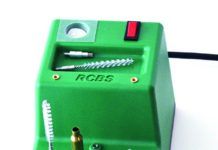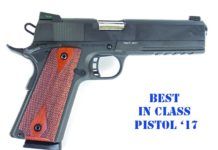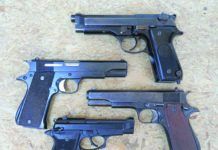Best Reloading Scales: Programmable Automatic Powder Dispensers Compete
For tests we acquired Hornady's $235 Lock-N-Load Auto Charge Powder Dispenser, Lyman's $275 Gen6 Compact Touch Screen Powder System, and the $300 RCBS Chargemaster Lite. We challenged each machine to deliver a starting load for 40 S&W handgun and a starting load for 6.5 Creedmoor rifle. We asked each machine to drop 4.8 grains of Winchester Super Target (WST) smokeless powder for our handgun loads. Despite being listed as a ball powder, it was plain to see that each particle of WST appeared to be disc shaped. Next, we asked our machines to drop 40.2 grains of Accurate Reloader 17 (RL17) for our rifle rounds. Granules of RL17 resemble tiny lengths of a very fine single-filament wire, sometimes referred to as a "stick"-type powder. Our choice of powders was based strictly on our needs at the time, determined in advance of ordering our test units. We later learned that stick-type powders were among the most troublesome for use in automatic dispensers. The Lyman manual didn't mention RL17 by name, but revealed that their machine was fit with a special adaptor for the fill tube when using such powders. In terms of cleanup, the RL17 powder was easier to evacuate than the granules of WST, which had greater surface area and a more porous texture that was slightly dusty. Given these factors alone, it looked like our three machines were in for a challenge.
Buying Self-Defense Insurance: Important Factors to Consider
As an attorney (and, for full disclosure, someone who was formerly an independent program attorney for Texas Law Shield), it is abundantly clear that the legal system puts self-defense shooters in a bad spot. It is costly, time consuming, slow, and worst of all, the legal system decides whether you keep your freedom after you have defended yourself. To make matters worse, this system is, from what I've seen, biased against gun owners. From my own experience, many law-enforcement officers, district attorneys, and even jurors seem to think that if you own or carry a firearm, you are inherently guilty in some way. They believe that even though you were actually carrying your lawfully owned firearm, you were really looking for trouble, you wanted an excuse to shoot someone, or similar mental fictions. I've honestly lost track of the number of times a gun owner was arrested after a lawful incident of self-defense. Accordingly, due to the nature of our legal system, individuals are purchasing legal protection in case they have to defend themselves.
Non-1911 Magazines: We Test A Passel of Them Head to Head
You can never have enough magazines. Modern pistol shooters practice hard; compete in IDPA, IPSC, and Three Gun matches. They need reliable equipment. Personal-defense shooters need reliable, functional magazines at a fair price. In this installment, we are testing magazines for fit, function, reliability and durability. In common with recoil, striker, and hammer springs, magazines should be replaced from time to time. While new springs may help magazines retain some function, there is a time when cracked or bent feed lips demand the magazine be discarded.
In this test, we followed the same criteria we used in testing 1911 magazines, except this test was more diverse in both handguns and cartridges. The handguns used in the test were proven examples, with few function exceptions. Since the firearms had long-ago proven reliable, there would be no confusion as to which part was responsible for the malfunction, the pistol or the magazine. We also used good-quality ammunition to test the magazines. In each case, we used at least two magazines of each type to bang on.
Using proven criteria and a team of experienced raters, we learned some magazines were durable and service grade; that is, we would be comfortable putting them into "service" in critical situations. We also learned others were okay for range use, but not critical use. In all of these cases, we recommend spending a little more for service-grade magazines across the board for all uses. We don't think it's advisable to mix low performers with high performers in this critical area of function.
The Bullseye Target Cam: SHOT Show 2018
This target camera records a 300 Yard Range (with clear line of sight) and features track shot placement (blinks with last shot), measure groups, calculate sight-in adjustments, mark shots, color shorts and more! View bullet impact on target immediately via your phone or tablet or computer. Recharge the cam's lithium-ion battery pack with charger (12hr run time). Compatible with free Bullseye Target Manager software package for iPhone, iPad, Android devices, windows XP, Vista, Windows 7 and Windows 8 Secure AmmoCan Style Carrying Case.
Touting a Blackhawk Holster
I have owned and used quite a number of different Galco and Bianchi holsters, mostly for autos, and am quite satisfied with this one by Blackhawk. In fact, it is probably the best holster product I have seen coming from Blackhawk thus far, as I have owned others. Paid $54 at Cascade Farm & Outdoor where it was recently on sale there at 25 percent off!. I think it has pretty good retention and concealability. It's the Blackhawk No. 420506BK-R (right hand model; left hand also available). Retention is adjustable.
Gemtech Integra and Mist Suppressors: SHOT Show 2018
Gun Tests Editor Todd Woodard interviews Alexander Crown, Marketing Manager for Gemtech Suppressors, and learns about the company's suppressor-integrated uppers in 5.56 NATO and 300 Blackout and 22 LR.
Revolver Holsters: Balancing Comfort, Speed, and Retention
Revolvers remain an important part of the personal defense scene. In some shops, the majority of handguns sold for personal defense are revolvers, usually small-frame 38s and compact 357 Magnum revolvers. The 357 Magnum remains a popular handgun among a large and loyal group, such as for outdoors carry and animal defense. Still other shooters deploy big-bore revolvers in 44 Special and 45 Colt chamberings. In all these cases, the shooter has to have a good holster to carry these handguns.
The design of a holster is important, and there are features specific to the revolver. A high ride keeps the revolver cylinder off the belt line. The revolver handle must be tilted into the draw, so the cant of the holster is important. The holster must retain a balance of speed and retention. The revolver cylinder presents a problem with concealment. The cylinder bulge inhibits the design of an inside-the-waistband holster, as an example. If the cylinder bulge rides below the belt line too much, the draw is affected. One of our senior raters noted that in the early days of police transition to the self-loader handgun, many of the holsters offered were simply revolver holsters without the cylinder bulge. The difference in balance and center of gravity wasn't understood or tended to.
In this evaluation, we considered that the modern revolver holster should be an individual design. Our focus is on concealed carry, with consideration given how revolvers might be used in the field. We tested a number of holsters from major makers and found them satisfactory to excellent in fit and function.
The fit of the holster should be sufficient that the revolver may be carried during normal day-to-day movement, even a brisk walk or run, with no danger of losing the handgun from the holster. The holster should allow a good sharp draw. After the revolver is drawn, the holster must not collapse, and the user should be able to re-holster the handgun without difficulty. Here's what we found.
Alternate Bolt-Release Levers for the AR-15: We Test Three
When it comes to ambidextrous capabilities, the AR platform still lags behind the modern semi-automatic pistol. How would ambidextrous controls make the AR-15/AR-10 more desirable? One easy answer is to accommodate the left-handed shooter. Another reason would be to help keep the weapon in the fight should the operator be left with only one available hand. Ambidextrous thumb safeties are somewhat popular, and so are magazine releases, but to a lesser extent. The focus of this evaluation is to compare three different aftermarket products that offer a secondary method for releasing the bolt of the AR-15 or AR-10 rifle. They are the $30 Magpul BAD Lever, the $29 Troy Ambidextrous Bolt Release Lever, and the $80 BattleBar from Smith Tactics. Neither the Magpul or the Troy Industries units required disassembly beyond separating the upper and lower ends of the rifle. The BattleBar required replacement of the hammer and trigger pins with supplied components. All three units were made from aluminum.
Protocol for loading the AR-15 begins with pushing the magazine upward into the magazine well until it clicks then tugging on the magazine to make sure it is seated. Next, the bolt release is pressed to bring the gun into battery. Mounted on the left-hand side of the receiver directly above the magazine well, the release is the upper portion of the combination bolt-lock and release lever that pivots with a seesaw motion on a centralized roll pin. Throughout this entire process, the strong hand remains in place, supporting the rifle and maintaining access to the trigger and thumb safety.
By adding any one of our test products, the operator can save some time by moving the hand directly to the support position after seating the magazine. This may seem like a minor consideration, but experienced AR operators point to instances wherein the support hand is needed to push open a door or the shooter needs to fire immediately after completing a reload. Also, participants in High Power Service Rifle competition can use this feature when top-loading single rounds is mandatory. Placing a round into the chamber and closing the bolt with the strong hand is a lot easier than untangling a gloved support hand from a sling. For tests, all three components were mounted on multiple rifles to check fit and function. Let's see how efficiently the three bolt-release levers operated.
Gun Rights Wish List Bogs Down
We're already into the second month of the year, and 2018 is looking like 2017 regarding gun legislation. To see how far gun legislation advanced, I checked the January 2017 "Downrange" column, which had a wish list of efforts for gun owners — and saw that not much is moving, or what is moving continues at a glacial pace.
Case-Prep Stations from RCBS, Lyman, and Frankford Arsenal
If you are an avid reloader of pistol ammunition, you are probably a little spoiled. Thanks to progressive loading machines, spent pistol cases can be deprimed, resized, and belled at the case mouth one after another, just by working a single lever. Preparing rifle cases for reloading is far more tedious, with each spent case demanding not only resizing in terms of diameters but also a return to specified length by trimming the edges of the case mouth, followed by chamfering of the case mouth interior and a cleaning of the primer pocket. Each of these operations touches upon the skills of a machinist or perhaps a tool-and-die maker. As such, we decided to look at some machines that automate the case-preparation process.
When we use the word "automated," we don't really mean it in the truest sense of the word. Case "prep" stations do not enable you to pop a spent shell into one side of the machine and retrieve a fully prepared case from the other. What these machines do is offer a measure of precision and provide the elbow grease for getting the job done. To find out how much help a case-prep station can be, we shopped Brownells.com and its sister company Sinclair International (SinclairIntl.com). We walked away with a $135 Lyman Case Prep Xpress and two RCBS products, the RCBS Trim Mate Case Prep Center ($130) and the $400 Universal Case Prep Center. We also acquired a $200 Frankford Arsenal Platinum series Case Trim and Prep Center. Of the four, only the Frankford Arsenal and the RCBS Universal provided a case-trim feature.
Our test cartridge cases were Hornady 6.5 Creedmoor brass left over from recent tests that had been sized and deprimed on our MEC Marksman press (see the March 2017 issue). The fired cases measured about 1.92 inches in length or more. Our goal was to size the empty cases to as close to 1.91 inches as we could get. Consistent results were what we were after, but convenience and ease of operation would be good reasons to buy a case-prep station, too. Durability and ease of cleanup are additional considerations, but we had to ask, would the skills of a professional machinist be necessary to produce the best results? Or could anyone turn a used case into a match-ready component? Let's find out.
2017 Guns & Gear Top Picks
Toward the end of each year, I survey the work R.K. Campbell, Roger Eckstine, Austin Miller, Robert Sadowski, David Tannahill, Tracey Taylor, John Taylor, and Ralph Winingham have done in Gun Tests, with an eye toward selecting guns, accessories, and ammunition the magazine's testers have endorsed. From these evaluations I pick the best from a full year's worth of tests and distill recommendations for readers, who often use them as shopping guides. These choices are a mixture of our original tests and other information I've compiled during the year. After we roll high-rated test products into long-term testing, I keep tabs on how those guns do, and if the firearms and accessories continue performing well, then I have confidence including them in this wrap-up.
Surplus 9mm Pistols From Star and Beretta: Worth the Cash?
The idea of what constitutes a "surplus firearm" has different meanings depending where you are in the world. Surplus firearms in the U.S. means extra on hand or dated equipment. In other countries, it could mean one step away from scrap metal. We try to avoid the latter, but we are always on the lookout for a diamond in the rough, and thought we'd look at a few surplus 9mm Luger and 9mm Kurz (380 Auto) pistols. We wanted to look at these pistols through the lens of an inexpensive pistol that would be suited as a sand pit plinker, but in a pinch, it perhaps could be called on to defend the ranch. The problem with older surplus pistols is the lack or scarcity of spare parts, including magazines. By definition, all surplus weapons have been used, and some used more than others.
We chose four pistols that are fairly common and easy to find online to go bargain hunting: Two are Berettas, a Model 92S and Model 85F, made in Italy by P. Beretta S.P.A., and two are Star pistols, made in Spain by Star Bonifacio Echeverria, S.A., a Model Super B and Model B. The Star Model Super B looks like it is ready for the scrap yard and the older Model B looked well used, but as we found out, both still had some teeth. The Beretta 92S is a second-generation 92, which evolved into the 92FS. The 92S is a lot more of a European gun than the 92FS, which definitely has US influence. The Beretta 85F is a smaller version of the 92FS and is the most modern of the pistols tested.
In past issues we have tested some old-school combat pistols and found them lacking, which makes sense. A horse worked a century and a half ago; but now we (can) drive Hummers. Accordingly, we had to make some accommodations for these guns' age. Since these are older pistols, we did not test with proofing loads or +P+ loads. These pistols were not designed for that type of high-pressure ammunition, and we had no desire to taste Italian or Spanish steel. Not that we are implying these are substandard pistols. These pistols are safe when used with ammunition originally intended for them. What we did want to find out was if different bullets types would impact performance. For instance, the Star pistols were manufactured before hollow-point bullets were popular, and we figured they might choke on hollow-point ammunition. We also wanted to see if different bullet weights would cause a stovepipe jam or failure to eject. We used off-the-shelf 9mm Luger ammo consisting of Hornady American Gunner with 115-grain XTP jacketed hollow points ($47/75 rounds), Aguila 124-grain FMJs ($17/50), and SIG Sauer 115-grain FMJ ($18/50). We found all three ammo types cycled flawlessly through the pistols with no issues. In the Beretta 85F, we fired 91-grain FMJs from Tula, 90-grain Speer Gold Dot hollow points, and Hornady Critical Defense 90-grain XTPs, which feature a hollow-point bullet with a polymer insert to facilitate expansion.
For accuracy testing, we placed the pistols on a bench rest to fire at targets set at 25 yards. In speed-firing exercises, we shot at targets at 7 yards, performing both Bill Drills and Mozambique Drills. The object with the Bill Drill is to fire as fast and as accurately as possible to hit an 8-inch zone. The Mozambique requires two fast shots to center of mass and a one to the head. All must be within their zones to be successful. This is what we found out when we exercised these old pistols.


